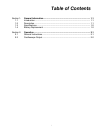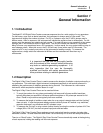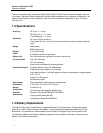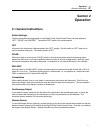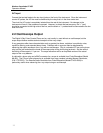
Nuclear Associates 07-453
Operators Manual
2-2
AC Input
Connect the two test leads to the two input jacks on the front of the instrument. Since the instrument
counts AC pulses, the AC line must be switched by the relay that is in the timer under test.
The circuit for AC inputs is completely isolated from the rest of the instrument. No damage to the
instrument will occur if the probes are reversed. However, to obtain the best accuracy, the “+” (red)
should be connected to the high side of the line, and the black or “-“ probe should be connected to the low
side of the line.
2.2 Oscilloscope Output
The Digital X-Ray Pulse Counter/Timer can be, and usually is, used without an oscilloscope, but the
scope output feature enables technical analysis of the x-ray output.
X-ray generators often have characteristics such as gradual rise times, variations in amplitude, noise,
capacitive filtering, and extended decay times. Problems with x-rays can often be diagnosed by
observing the output waveform of an x-ray with an oscilloscope. Plug in a standard 2.5 mm mono phone
plug into the jack and attach the leads of the scope probe to the phone plug terminals. Set the vertical
sensitivity of the scope to 1 V per cm. The scope waveform will be an amplified version of the actual
output of the x-ray detector.
A cable with a phone plug and a BNC connector for a scope is available from Fluke Biomedical (Model
88-453). The 2.5 mm mono phone plug is available from many vendors including Mouser Electronics,
(P/N 177PP053). The Remote Sensor available from Fluke Biomedical (Model 07-453-2000) is
particularly useful when observing the x-ray output using an oscilloscope.





